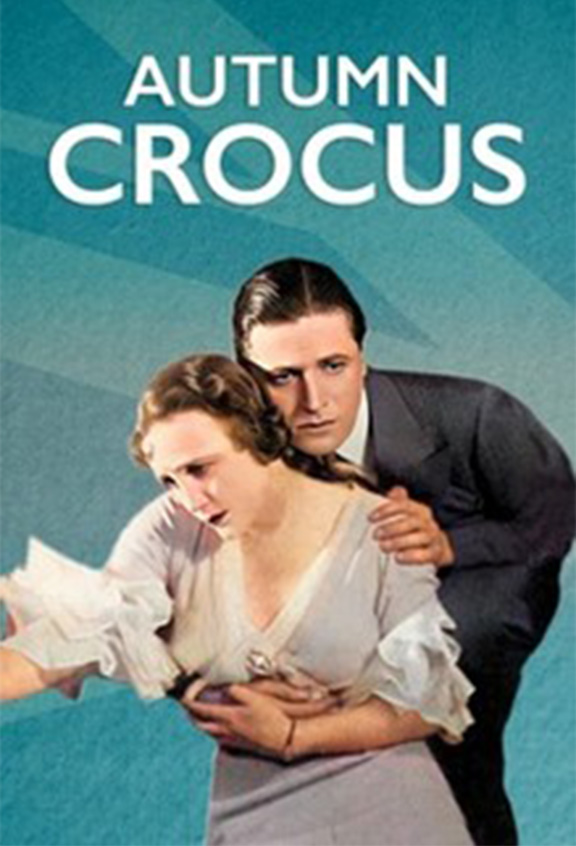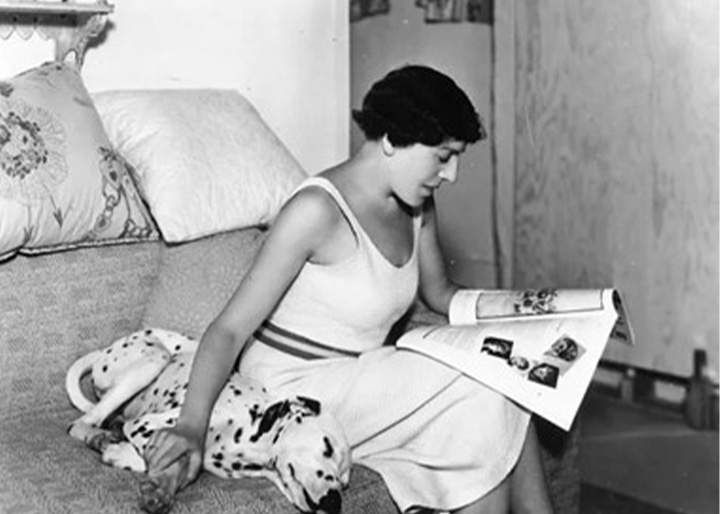Did you know that there is a connection between The Hundred and One Dalmatians and Heal’s? The classic story that brought us the spotted pup obsessed Cruella de Vil, was written by none other than a former Heal’s employee, Dodie Smith. Before Dodie became a successful writer, she worked on the shopfloor at Heal’s in the 1920s and 30s, selling toys and gifts in the store’s Little Gallery. It was never Dodie’s dream to work at Heal’s, but after an unsuccessful attempt at becoming a stage actress, she was in need of a steady job. Her biographer, Valerie Grove, wrote that Dodie went to her interview at Heal’s in 1923 ‘with a heavy heart’ and she was ‘not temperamentally suited to the shopgirl’s humdrum life of clocking in from nine to six.’ Despite her reluctance to enter a ‘humdrum’ working life, Dodie worked at Heal’s for nearly a decade, and her time at the store became one of the most important periods of her life.

Dodie Smith surrounded by toys in Heal’s Little Gallery in the 1920’s.
Not only did Dodie have a successful professional career at the store, but she also entered a defining chapter of her personal life since it was at Heal’s where she began a romantic relationship with the store’s director, Ambrose Heal. Dodie was known at Heal’s for her offbeat personality and quirky appearance, and this eccentricity caught the attention of the married Ambrose Heal who began a flirtatious relationship with her in her first three years at the store. It wasn’t until 1927 that their affair officially began, and at this time Ambrose was also romantically involved with another Heal’s employee, Prudence Maufe. However, Ambrose and Dodie’s relationship was not simply romantic, and Ambrose also became a supporter of Dodie’s writing career.
Before Dodie began writing novels, she wrote for the stage, and since Ambrose was an admirer of theatre, he was attracted to her ambition to become a playwright. His support for her writing began when he shared her first staged play, Autumn Crocus, with the producer Nigel Playfair, who praised her writing and made a move to put it on, but was outbid by his rival producer, Basil Dean. Ambrose also contributed to Dodie’s second play, Service, a play set at a family owned department store directly based off of Heal’s. The play’s lead, Gabriel Service, was the Ambrose Heal of the fictional ‘Service’s’ department store, and Ambrose even supplied Heal’s furniture for the sets. These two plays cemented Dodie as a successful playwright in London, and eventually gained her recognition in America when Autumn Crocus went to Broadway. This play also garnered Dodie the first film adaptation of her work in 1934, casting her into the mainstream entertainment industry.

A poster for the 1934 film version of Autumn Crocus starring Fay Compton and Ivor Novello.
In these same years, Dodie also met Alec Beesley, a fellow Heal’s co-worker and the man who would become her future husband. Things became rather tangled when Dodie entered this love triangle with two of her colleagues, and eventually she ended the affair with Ambrose in 1932 and married Alec in 1939. Even though their romantic relationship ended, Ambrose and Dodie did remain friends and he continued to support her plays, even serving as a backer for her fourth play Bonnet Over the Windmill in 1937. Ultimately, with her success as a playwright, Dodie no longer needed to work at Heal’s, but she continued to work irregular short shifts as a toy buyer until 1932. Dodie’s work in the toy department is especially relevant this year since Heal’s has reintroduced toys to the store for the first time in nearly a decade. We may not have the whimsical Dodie Smith to sell toys anymore, but it is fun to imagine the children’s author helping children and parents pick out the perfect toy. Photographs of Dodie at work in the Little Gallery in the 1920s show her surrounded by stuffed animals, rocking horses, dolls, and even a toy Heal’s delivery coach. The toys currently for sale at the store are similar to what Dodie was selling a century ago: a colourful range of stuffed animals, dolls, and wooden playsets by Little Dutch, OYOY, and Vitra. Reintroducing toys to the store this season came just in time for the holidays, which has always been a favourite time of year at Heal’s. A Heal’s Christmas poster from when Dodie worked at the store depicts Noah’s Ark, with the slogan ‘Heal’s Ark is a refuge in the flood of Christmas Shopping.’ Fittingly, one of our new toys this year is a wooden Noah’s Ark playset by Little Dutch that recalls this historic Christmas poster. It is fair to say that Dodie was so enthusiastic about Christmas time at Heal’s that she continued to run the toy department at Christmas until 1931, even when she was only working a few hours a week.


Left: The 1930’s ‘Heal’s Ark’ Christmas poster.
Right: Noah’s Ark wooden playset by Little Dutch now available at Heal’s.
To conclude the Dodie Smith story, her fascination with Dalmatians began in 1934 when she received her first Dalmatian as a birthday gift from her husband. She named the dog Pongo, which later became the name of her canine hero in The Hundred in One Dalmatians. Pongo also served as inspiration for Cruella de Vil’s iconic black and white fashion when Dodie’s friend, the actress Joyce Kennedy, told her that Pongo ‘would make a nice fur coat.’ Dodie herself was also very fashionable, making her own unique clothes when she first began working at Heal’s, so her own love of fashion could have served as inspiration for Cruella’s couture craze. The book was published in 1956 and Disney made it into a film shortly after in 1961, beginning the first of several remakes to come in the following decades, including Cruella in 2021. This most recent adaptation gives the imagined backstory of Cruella de Vil, and in the film the young Cruella even works as a cleaner at Liberty department store in London before becoming a villainous fashion designer. This shopgirl to celebrity parallel between Dodie and Cruella cleverly tips a cap to Dodie’s own backstory at Heal’s.

Dodie with her first Dalmatian Pongo in 1934.
In a 1957 letter to Walt Disney, Dodie thanked him for turning the book into a film, writing ‘I always hoped you might—so much so that, when I was writing it, I often found myself visualising the scenes as they would be in cartoon.’ Even though nearly thirty years had passed between Dodie’s work at Heal’s and her publication of The Hundred and One Dalmatians, it is clear that her years at Heal’s helped her begin a successful career as a writer. The ‘humdrum’ shopgirl job that Dodie was so reluctant to accept, gave her the financial stability to support a writing career, and introduced her to people who also supported her ambitions. She was a dreamer who set her mind to the life she wanted and did what she had to do to make it a reality, even if that meant giving up her dreams of acting to work at a department store. So next time you read or watch The Hundred and One Dalmatians, just remember that the woman behind the classic once only daydreamed of entertaining the world with her stories while she sold toys at Heal’s.

A first edition copy of The Hundred and One Dalmatians.
For further reading on Dodie Smith please refer to Valerie Grove’s biography, Dear Dodie: The Life of Dodie Smith.
